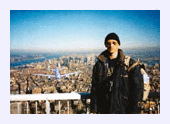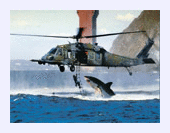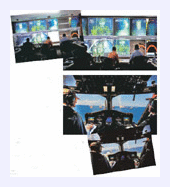In the second week of July, nearly 50 students in Tamil Nadu were caught submitting bogus marksheets for college admissions, blowing the lid off a coordinated, state-wide fake marksheet scam. The modus operandi of the forgers, it was discovered, involved the simple use of blank marksheets pilfered from university offices, desktop scanners and a piece of software called Adobe Photoshop. A week later, halfway across the world, energy company BP Plc admitted after an online firestorm that it had digitally altered or "photoshopped" some of the images released to show the company's response to the Gulf of Mexico oil spill.
The landmark image editing program celebrates 20 years since its first release in June 1990, and its appearance in recent news is perhaps unfair to its legacy and importance in the world of photography and digital design. It's among the few hallowed pieces of technology to have its own verb, and it has democratized professional photo-editing on the Internet (bloggers spotted BP's Photoshop faux pas, not image analysis experts). Its ubiquity, however, has led us to an interesting question: Where does one draw the line between digital "improvement" and "manipulation"? "When I look at a picture I like to ask myself the question, is that real? If I can't tell, then the person either took a phenomenal photo or did a fantastic job in Photoshop," says Terry White, worldwide evangelist for Photoshop developers Adobe.
"Using Photoshop is part and parcel of photography now, but the constructive use of it is a carefully applied skill," says Mumbai-based photographer Vishal Bhende, who conducts training workshops on the use of Photoshop. Most of the questions he fields at these sessions, he says, involve flamboyant things - replacing backgrounds, airbrushing elements out of a photo, or removing blemishes. The over-eager use of the tool has seen many contortion-bending magazine covers (and appalling instances of "whitewashing", or lightening of skin tones), most of which are lovingly chronicled by blogs such as
Photoshop Disasters. We look at five famous Photoshop gaffes over the years:
2001 - the 9/11 tourist

© Live Mint.com
The 9/11 tourist photograph appeared online shortly after the 11 September 2001 attacks in the US, showing a man standing on top of the World Trade Center, with a large plane flying towards the building behind him. The photo was dismissed as a hoax fairly quickly, but that didn't diminish its popularity. To this day, the picture still appears in email forwards and message boards.
2005 - Shark Helicopter

© Live Mint.com
The "Shark Helicopter" was a popular email forward that grafted two separate images, showing a shark attacking a helicopter hovering above water. It claimed to be "National Geographic's photo of the year", forcing the magazine to put up a stern warning that it was a hoax. "Nationalgeographic.com has received hundreds of visits each day due to this photo since the latest round of the email began," the post said.
2010 - BP's crisis response

© Live Mint.com
On 20 July, blogger John Aravosis spotted something strange on BP's website. The company had uploaded a series of pictures to show its response to the Gulf of Mexico oil spill - among them a picture taken at BP's command centre showing a row of screens monitoring the situation. Closer investigation showed that a number of blank screens had been "filled in" with Photoshop, albeit so poorly that Aravosis called it an "incredibly amateur job".
"I guess if you're doing fake crisis response, you might as well fake a photo of the crisis response center," he wrote in a scathing blog post. A day later, BP owned up, admitting that three images from the set were "digitally altered".
2008 - Iran's cloned missile

© Live Mint.com
In July 2008, Sepah News, the media arm of Iran's Revolutionary Guard, posted a number of images showing a successful Iranian missile test. The photo, which made the front pages of the Financial Times, the Los Angeles Times and the BBC website, was exposed as a poor Photoshop job, with telltale cloned smoke trails. The image was later retracted.
2008 - the Tibetan rail

© Live Mint.com
An award-winning photograph showing antelopes galloping beneath China's shiny Qinghai-Xizang railway was shown to be digitally altered, forcing news agency Xinhua to issue an apology. The picture, when it appeared, seemed to soften the environmental concerns surrounding the new railway line, with worries that it would destroy the breeding ground of the endangered
chiru antelope.
Reader Comments
to our Newsletter